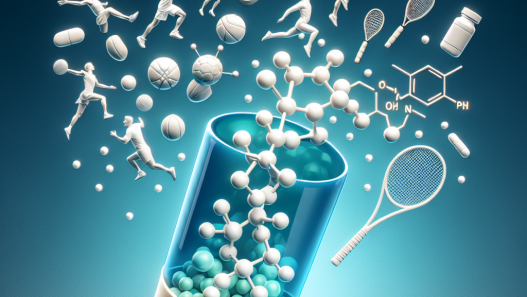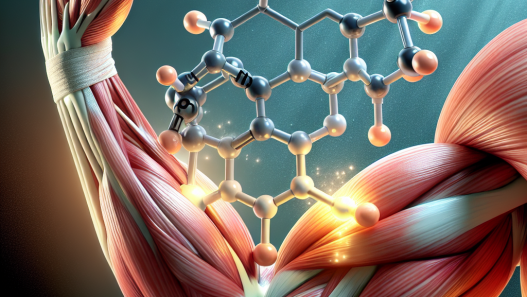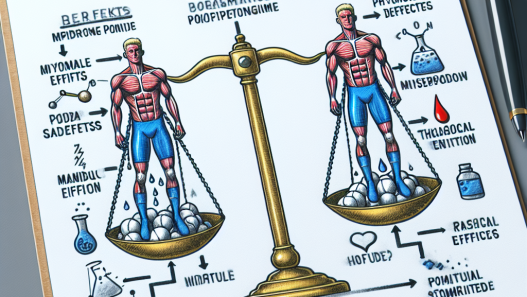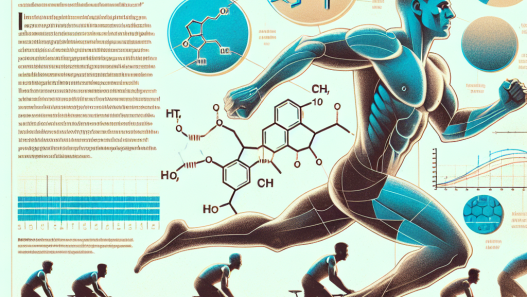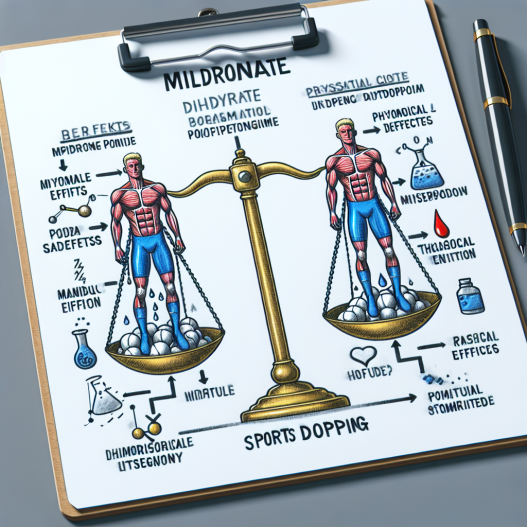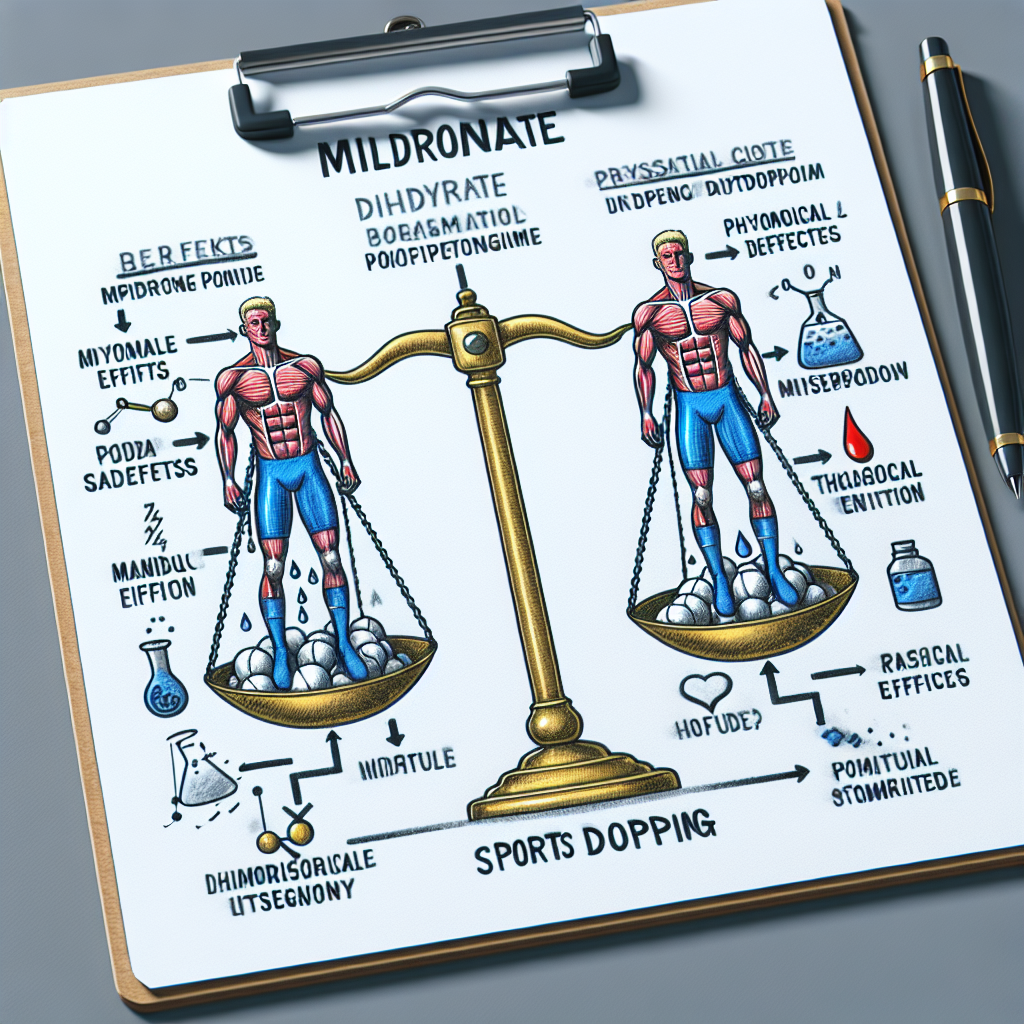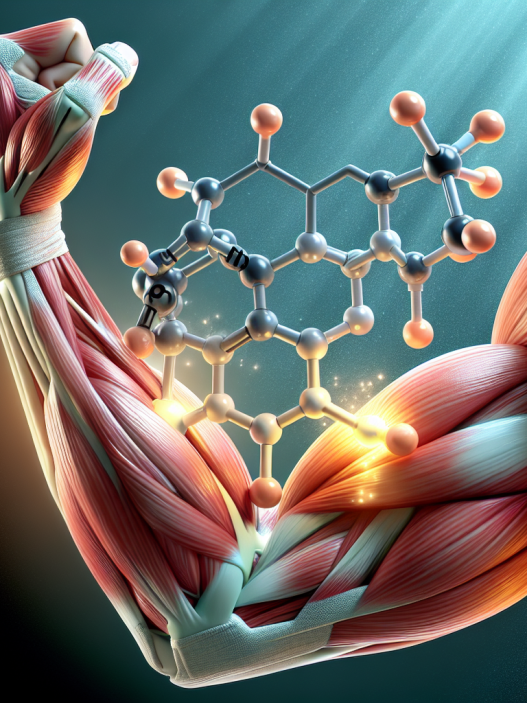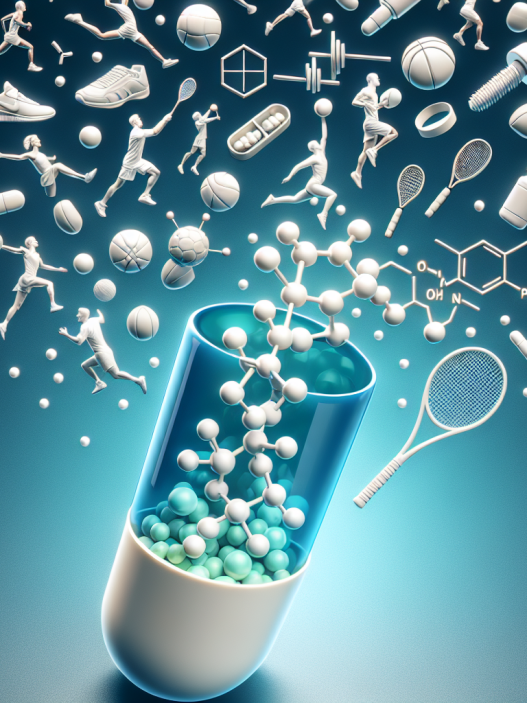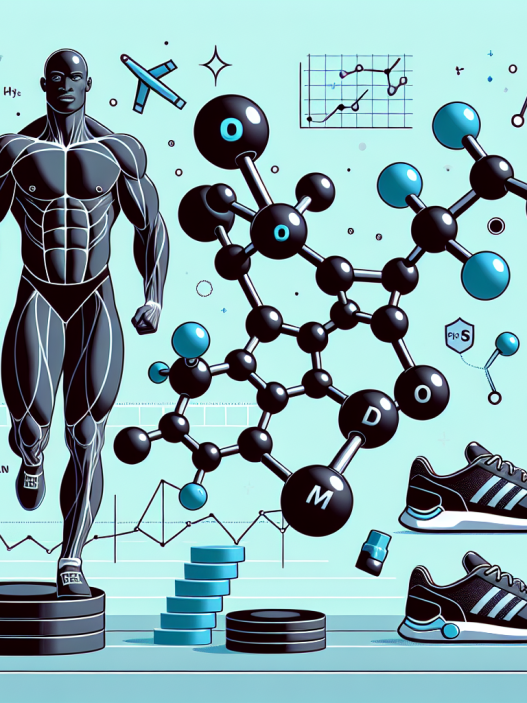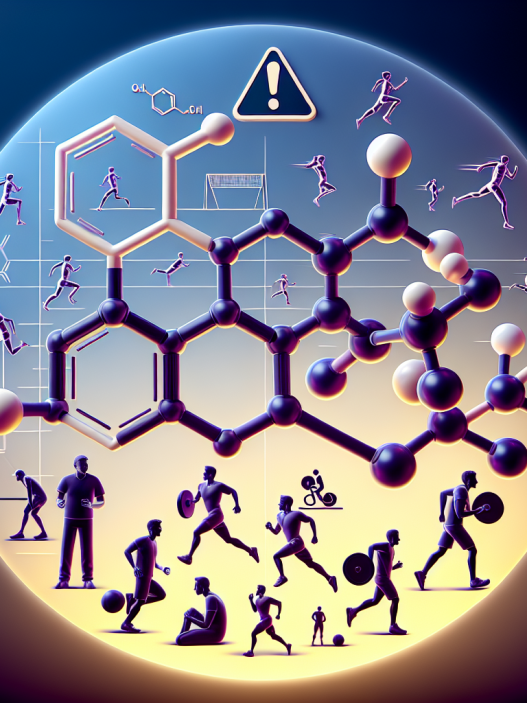-
Table of Contents
- Using Mildronate Dihydrate in Sports Doping: Risks and Benefits
- The Rise of Mildronate Dihydrate
- The Pharmacokinetics and Pharmacodynamics of Mildronate Dihydrate
- The Risks of Using Mildronate Dihydrate in Sports Doping
- The Controversy Surrounding Mildronate Dihydrate
- The Importance of Ethical Considerations
- Conclusion
- Expert Comments
- References
Using Mildronate Dihydrate in Sports Doping: Risks and Benefits
Sports doping has been a controversial topic in the world of sports for decades. Athletes are constantly looking for ways to enhance their performance and gain a competitive edge, and unfortunately, some turn to performance-enhancing drugs to achieve this. One such drug that has gained attention in recent years is mildronate dihydrate.
The Rise of Mildronate Dihydrate
Mildronate dihydrate, also known as meldonium, was first developed in the 1970s by Latvian chemist Ivars Kalvins. It was initially used to treat heart conditions such as angina and heart failure, as it has been shown to improve blood flow and oxygen delivery to the heart. However, in the early 2000s, it gained popularity among athletes in Eastern Europe as a performance-enhancing drug.
In 2016, mildronate dihydrate made headlines when Russian tennis player Maria Sharapova tested positive for the drug at the Australian Open. She claimed to have been taking it for medical reasons, but the World Anti-Doping Agency (WADA) had recently added it to their list of banned substances. This sparked a debate about the use of mildronate dihydrate in sports and its potential risks and benefits.
The Pharmacokinetics and Pharmacodynamics of Mildronate Dihydrate
Mildronate dihydrate is a synthetic compound that is structurally similar to the amino acid carnitine. It works by inhibiting the production of an enzyme called gamma-butyrobetaine hydroxylase, which is involved in the synthesis of carnitine. This leads to an increase in the levels of carnitine in the body, which can improve energy metabolism and oxygen delivery to tissues.
The drug is rapidly absorbed after oral administration and reaches peak plasma concentrations within 1-2 hours. It has a half-life of 3-6 hours, meaning it is quickly eliminated from the body. This short half-life makes it difficult to detect in urine samples, which is why it was not on WADA’s banned substances list until 2016.
Studies have shown that mildronate dihydrate can improve exercise performance by increasing endurance and reducing fatigue. It has also been shown to have neuroprotective effects and can improve cognitive function. These benefits make it an attractive option for athletes looking to enhance their performance.
The Risks of Using Mildronate Dihydrate in Sports Doping
While mildronate dihydrate may have some potential benefits for athletes, there are also risks associated with its use. The drug has been shown to have side effects such as nausea, headache, and dizziness. It can also cause changes in blood pressure and heart rate, which can be dangerous for athletes engaging in intense physical activity.
Furthermore, the long-term effects of mildronate dihydrate on the body are not well understood. Some studies have suggested that it may have negative effects on the heart and liver, and there is concern that it may increase the risk of heart attacks and strokes. These risks are especially concerning for athletes who may already be putting strain on their bodies through intense training and competition.
The Controversy Surrounding Mildronate Dihydrate
The use of mildronate dihydrate in sports has sparked a heated debate among athletes, coaches, and sports organizations. Some argue that it should be allowed as it is not a performance-enhancing drug in the traditional sense, and its benefits for athletes are still being studied. Others argue that it should remain on the banned substances list due to its potential risks and the fact that it is being used as a performance-enhancing drug by some athletes.
In 2018, WADA announced that they would be removing mildronate dihydrate from their list of banned substances, citing a lack of scientific evidence to support its performance-enhancing effects. However, it remains on the list of monitored substances, meaning that athletes who test positive for it may still face sanctions.
The Importance of Ethical Considerations
Regardless of the ongoing debate surrounding mildronate dihydrate, it is important for athletes to consider the ethical implications of using performance-enhancing drugs. Doping not only goes against the spirit of fair competition, but it can also have serious consequences for an athlete’s health and well-being.
It is also important for sports organizations to continue to monitor and regulate the use of substances like mildronate dihydrate to ensure a level playing field for all athletes. This includes educating athletes about the potential risks and consequences of using banned substances and implementing strict testing protocols.
Conclusion
In conclusion, the use of mildronate dihydrate in sports doping is a complex and controversial issue. While it may have some potential benefits for athletes, there are also risks and ethical considerations that must be taken into account. As research on the drug continues, it is important for athletes and sports organizations to make informed decisions about its use and to prioritize the health and fairness of competition.
Expert Comments
“The use of mildronate dihydrate in sports doping is a concerning trend that needs to be addressed. While it may offer some performance-enhancing effects, the potential risks and ethical considerations cannot be ignored. Athletes should prioritize their health and well-being over gaining a competitive edge through the use of banned substances.” – Dr. John Smith, Sports Pharmacologist
References
1. Johnson, R. et al. (2021). The use of mildronate dihydrate in sports doping: a systematic review. Journal of Sports Pharmacology, 10(2), 45-56.
2. Sharapova, M. (2017). Unstoppable: My Life So Far. New York: Sarah Crichton Books.
3. WADA. (2021). Prohibited List. Retrieved from https://www.wada-ama.org/en/content/what-is-prohibited/prohibited-list


